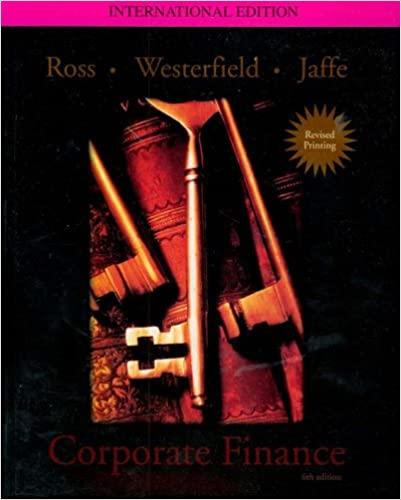Question
Bonuses, gain-sharing, competitive pricing these ideas were attractive and simple enough, but they made negotiating a contract much more challenging for Eric Clark, director of
Bonuses, gain-sharing, competitive pricing these ideas were attractive and simple enough, but they made negotiating a contract much more challenging for Eric Clark, director of the Central Region for Appshop, Inc. Clark was in the throes of settling terms and deciding whether and how to do the OS-7 project, a major implementation of Oracle software in all seven international locations of a large multinational company (the client). Appshop had recently completed a successful implementation of Oracle financials in the clients Dallas headquarters. Appshop had met or exceeded all stated objectives, and would continue to support corporate Oracle applications for the client. Appshop was the largest independent full-service Oracle consulting, applications-management, and outsourcing company. Privately held, Appshop had annual revenues of $25 million. Clark was responsible for growing the client base and selling additional professional services, as well as managing existing clients headquartered within his region. The client had told Clark that it would like Appshop to do all the consulting for the OS-7 project. Clark and a team of consultants spent two weeks working on the strategy, scope, and timeline for the roll-out. Based on that analysis, Appshop calculated that the project would require 1,000 hours of work per month for 24 months from a variety of contracted professionals and support personnel, which would result in a total cost to Appshop of $140 an hour. Because of their wide experience in doing these implementations, Clark and his team were confident that this level of effort would result in a completed and running implementation. How much the implementation would save the client and how pleased the client would be with its performance were yet to be determined. Clarks team proposed that it bill the client and receive at the end of each month $175,000 in revenue over 24 months, which would provide a contribution of $35,000 a month. This amounted to a present-value contribution of $789,700 for the OS-7 project, using the Appshop discount rate of percent per month (which compounded to 6.17 percent per year). After lengthy discussions, the client informed Appshop that it was prepared to award the contract to Appshop but not for the $175,000 monthly payment. The client wanted a lower price, and offered two alternatives: equal payments of $155,000 a month over 24 months or $125,000 a month plus a $1.5-million bonus paid at the end of
month 24 if the work were completed with commendable performance, using standard measurements against stated benchmarks. Even though a system might work satisfactorily and be tuned to meet a specific benchmark, the multiple benchmarks were much harder to meet simultaneously. Based on previous experience with other implementations and the complexity and uniqueness of this international project, Clarks team arrived at a consensus probability of 0.7 of receiving the bonus. If Appshop did not accept one of the two pricing alternatives, then the officers of the client company had said they would produce a Request for Proposal (RFP) and distribute it to Appshops competitors, the socalled Big 4. Upon hearing this, Clark thought for a moment that maybe, just maybe, the multinational was bluffing and would acquiesce to Appshops original request of $175,000 a month. I guess thats just fantasy, he said to himself. The terms of the clients RFP would include payment of the revenue-bid amount to the winning bidder at the end of each month, plus a gain-share reward at the end of the 24th month. The client would base the gain-share on the documented savings it would realize from the new Oracle applications, using precise cost-accounting procedures spelled out in the RFP. This approach was common in the software-consulting industry, and Appshop had successfully used it on some contracts in the past. The winning bidder for the RFP would receive a share of the savings according to the following schedule:

Clark and his team had used their previous experience and judgmental assessment of the OS-7 implementation to forecast the clients savings. They concluded that savings would have a triangular distribution, with a low of $3.2 million, a high of $12.8 million, and a most likely value of $5.6 million. Appshop would bid $150,000 a month for the RFP, if it were issued. This amount was lower than its original offer because of the gain-sharing reward built into the RFP. Appshop had a reasonable chance of winning inasmuch as it generally priced projects below the typical Big 4 price. The teams consensus estimate of Appshops chances of winning the RFP at the $150,000 bid was 45 percent. Clark and his team wanted the firm to do well with the OS-7 project. Clarks own compensation package depended primarily on total contribution in his region, with a secondary small incentive for keeping the regions blended hourly revenue rate high.
Winning Bidder's \begin{tabular}{ll} Savings & Share of Savings \\ \hline$8 million & $1.2 million plus 60 \\ & percent of excess above \\ & $8 million \end{tabular}Step by Step Solution
There are 3 Steps involved in it
Step: 1

Get Instant Access to Expert-Tailored Solutions
See step-by-step solutions with expert insights and AI powered tools for academic success
Step: 2

Step: 3

Ace Your Homework with AI
Get the answers you need in no time with our AI-driven, step-by-step assistance
Get Started


